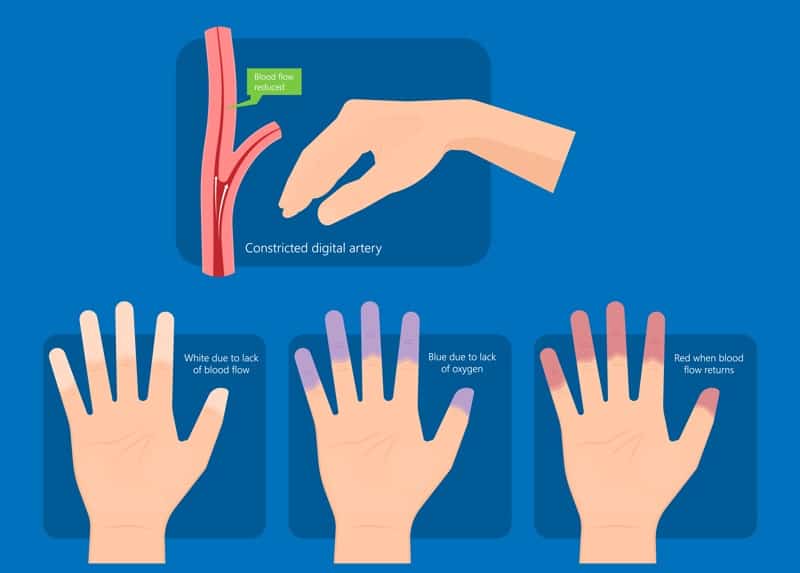Cold hands and feet
Do you have Raynaud’s Disease? Do the self-test
Raynaud’s Disease is an unpleasant condition that causes your hands and feet to become cold due to short-term constriction of your arteries. You won’t notice it, except for the consequences: brrr, your hands and feet like ice cubes.
Unsure if you’re just suffering from cold fingers like many people or if you might have Raynaud’s Disease after all? Take the self-test to find out.
Take the Raynaud's self-test
Question 1
Do your fingers or toes change colour (white, blue, red, purple) with changes in ambient temperature or during times of stress? YES/NO
Question 2
Do your fingers or toes tingle or feel dull and painful when they change colour? YES/NO
Question 3
Do you suffer from sore fingers or toes again when you’re warming up your hands and feet? YES/NO
RESULT
Did you answer YES to two or more questions? Then there is a good chance that you have Raynaud’s Disease. The symptoms are unpleasant but thankfully mostly harmless and with some adjustments to your lifestyle and/or medication, you can relieve your complaints. Read our Raynaud’s Disease tips or take a look at our range of heated gloves and heated socks so that you can address your symptoms immediately.
In some cases, however, there may be an underlying condition, such as a vascular disease or an autoimmune disease. If you want to know if this might be you, please answer the questions below.
Raynaud's Disease self-test continued
Question 1
Did your Raynaud’s symptoms start after your thirties? YES/NO
Question 2
Do you suffer from symptoms more than ten times a week? YES/NO
Question 3
Do your fingers and toes also swell when the colour changes occur? YES/NO
Question 4
Do you suffer from sores or wounds around your fingertips and toes? YES/NO
Question 5
Are your symptoms only on one hand or foot? YES/NO
Question 6
Do you also suffer from skin rashes, a dry mouth, dry eyes, muscle weakness, heartburn or joint complaints? YES/NO
RESULT
Did you answer YES to one or more questions? Contact your doctor. Your doctor can assess whether you need to be referred to a rheumatologist or immunologist for further examination. This is because there may be an underlying autoimmune disease, a rheumatic disease or a vascular disease. It can take just one visit to a specialist to identify the cause of Raynaud’s Disease and you can then work towards a solution.

